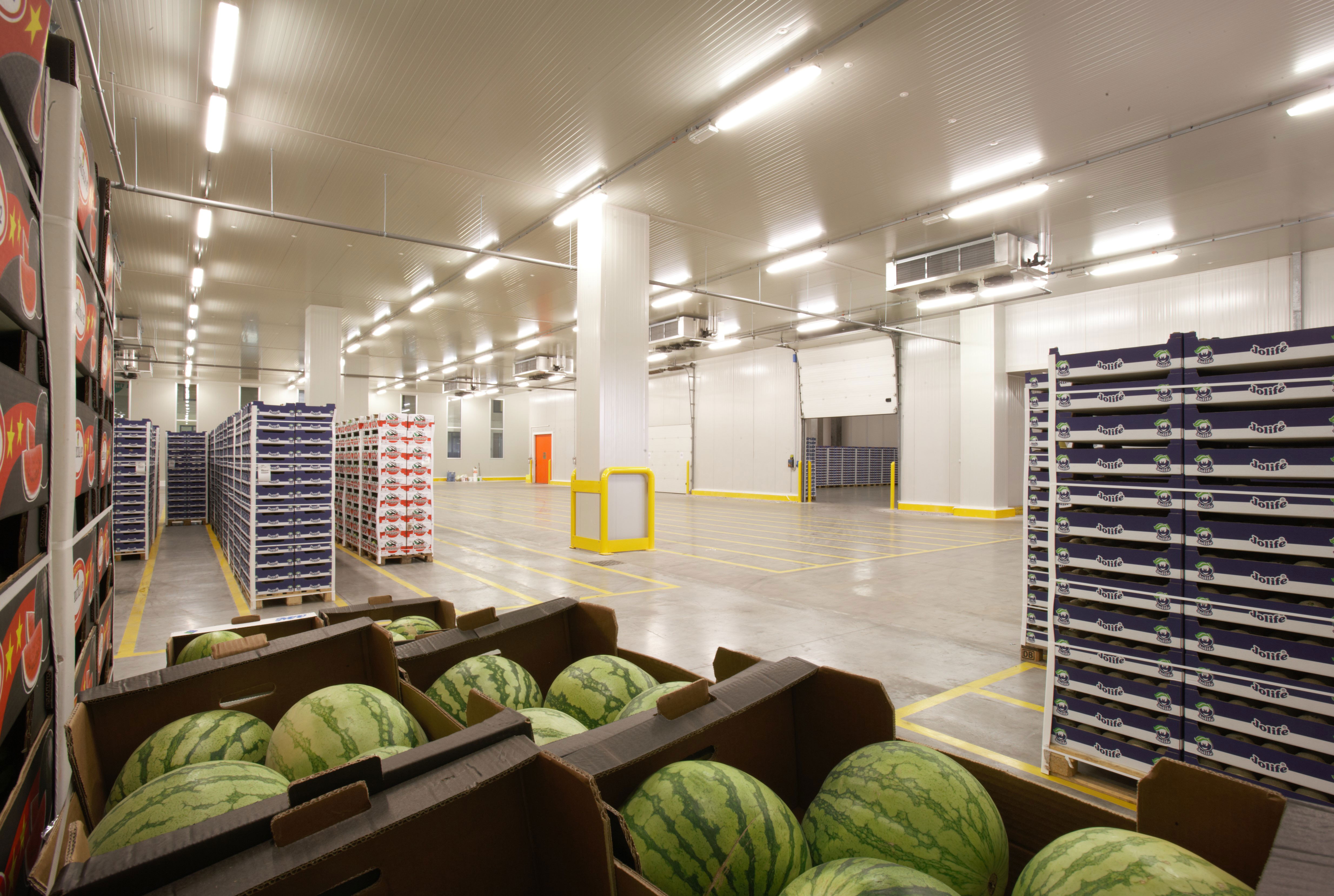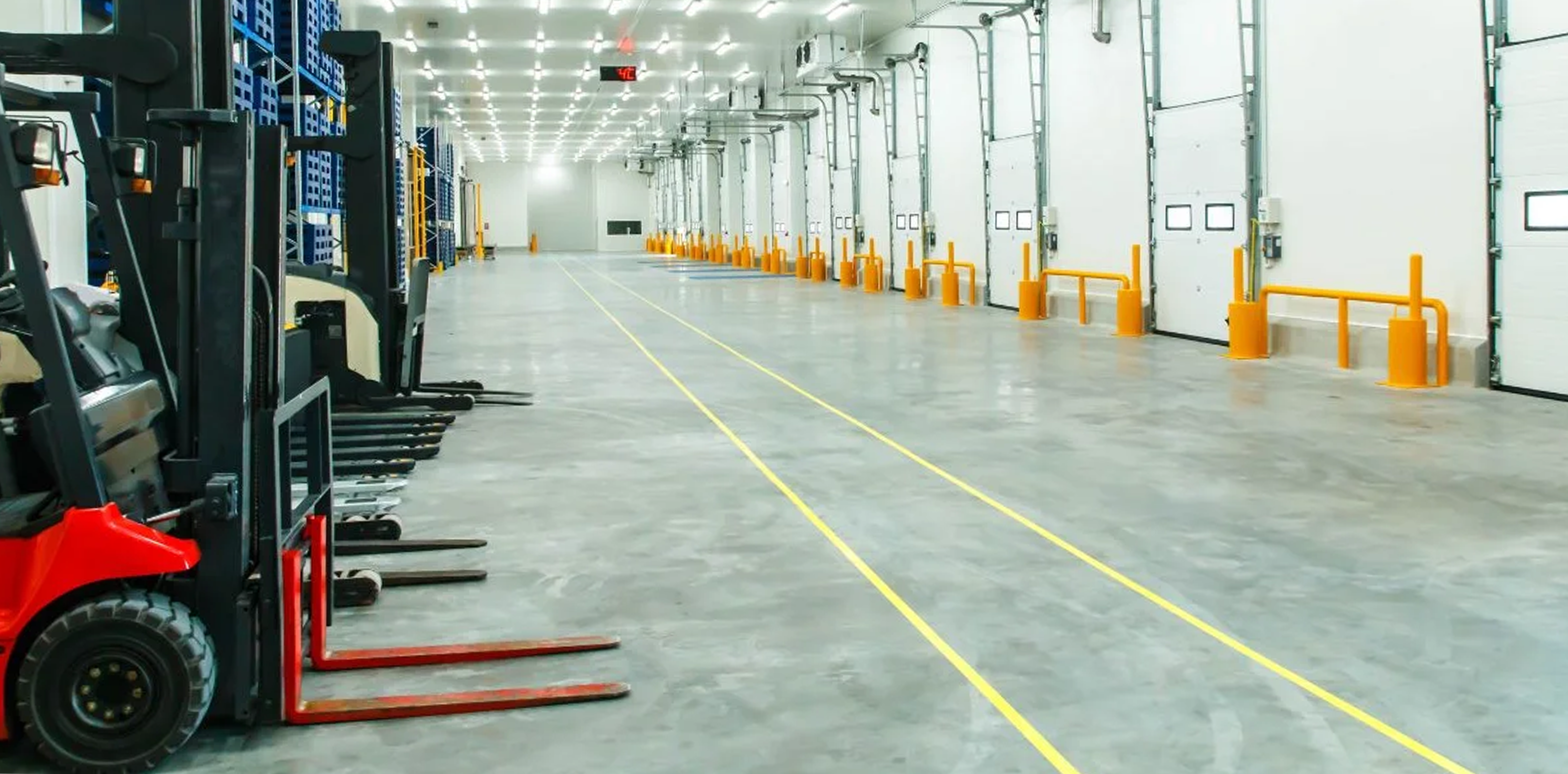Cold rooms are essential temperature-controlled environments in the food industry and the pharmaceutical industry.
One or more rooms connected to each other can be used to create rooms for the conservation, refrigeration, or pre-refrigeration of products. A stable and pre-established temperature must be maintained in these rooms. This temperature can vary depending on the function of the room, from +18°C for the ripening of fruits such as bananas and avocados to -28°C for the freezing of fish or vegetables. In the pharmaceutical industry, cold rooms are used to keep samples, tissues, and vaccines at ideal temperatures for study and application.
A refrigerated warehouse requires a detailed specification of the materials that will be used in order to obtain the necessary insulation. This will help to reduce manufacturing and maintenance costs. The analysis of the warehouse should consist of identifying the necessary performance to maintain regularity in internal conditions, particularly temperature.

Clean Rooms
Clean rooms are common in the food and pharmaceutical industry, as well as the mechanical, electronic, automotive, and aerospace industries. These industries increasingly require sterile processing areas to guarantee the safety and hygiene of the finished product.
These are clean, controlled, and sterilized areas with a controlled atmosphere. This means that the air inside them contains a minimum amount of suspended dust particulates. Their construction, correct use, and maintenance are constantly regulated by national and international standards.

Positive Temperature Cold Rooms
These are chambers characterized by a temperature between 0° C and 18° C. They are mainly used to conserve fruits and vegetables. In the case of the medical and pharmaceutical sector, they are used to conserve some sample tissues and medicines. They provide an appropriate environment for storing fresh food in industrial quantities, guaranteeing constant temperatures and low humidity levels, through insulating coatings with low thermal transmittance.

Negative Temperature Cold Rooms
Characterized by a temperature range of 0°C to -28°C, cold rooms at negative temperatures are used for the pre-chilling of fruits and vegetables, refrigeration, freezing, and ultra-freezing. In the pharmaceutical industry, they are used for the conservation of vaccines that require ultra-frozen environments. They provide a suitable environment for storing and freezing food with strict temperature control, ensuring that humidity and the internal atmosphere within the insulating casings have very low transmittance and thermal dispersion.
The right Materials for Cold Rooms
For spaces with controlled temperatures, such as cold rooms or clean rooms, there are different types of insulating panels that help ensure the necessary temperatures for the storage of food and medicines. Insulating panels for environments with controlled temperatures can be made of various materials, including coated antibacterial steel, pre-painted steel sheets, or stainless steel sheets, depending on the required performance, such as resistance to fire and/or durability.
For controlled temperature environments, insulated polyurethane or polyisocyanurate panels are mainly used. These include IsoCindu's Isoparete and Isobox panels, which are specifically designed for the food and medical industries. They combine insulating properties with either hidden or visible fixing, and an ideal tongue-and-groove system to avoid thermal bridges and improve insulation.
IsoCindu has two types of profiling that are developed on the production line, in addition to the smooth and embossed finish, which is also applied on the production line. This provides greater structural resistance, hides details such as bumps and dents caused by use, and mitigates undulations in the panel surface.
In addition to the above characteristics, IsoCindu panels have a butyl seal that is applied at the plant. This component benefits the performance of the panel by allowing a homogeneous and reliable seal that minimizes thermal bridges, reduces the risk of leaks and filtration, and facilitates installation.
To maximize thermal performance and guarantee up to 20% less heat loss, IsoCindu has new generation formulations with LEAF technology. These formulations have an excellent fire reaction and do not contain halogenated components, which are harmful to the environment.
IsoCindu insulating panels represent one of the most useful solutions in the field of production and maintenance of the cold chain.
MARKET
- Česká republika
- Deutschland
- España
- France
- Italia
- México
- România
- USA
LANGUAGE
-
 American
American
-
 Mexico
Mexico
-
 Română
Română
-
 polski
polski
-
 Nederlands
Nederlands
-
 Italiano
Italiano
-
 Čeština
Čeština
-
 Français
Français
-
 Deutsch
Deutsch
-
 Español
Español
-
 English
English


